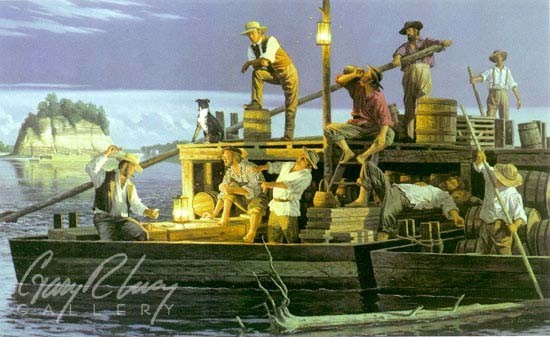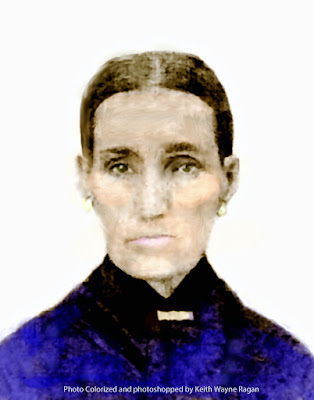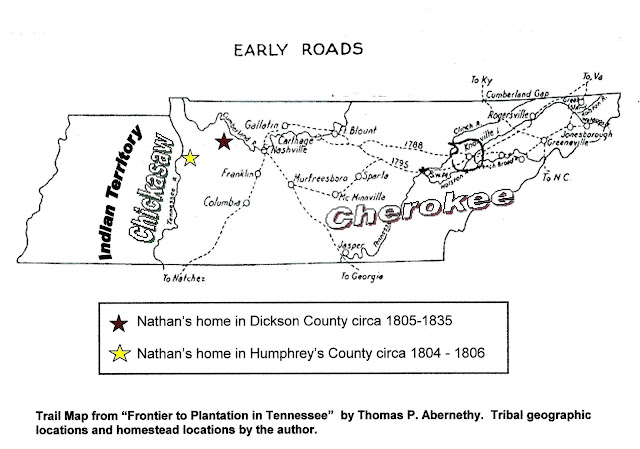OUR TARLTON STORY--PART TWO/General Azion Tarlton in Shawneetown, Illinois
AZION
TARLTON IN SHAWNEETOWN, ILLINOIS
 |
| Flatboats on the Ohio by Deborah Heal |
OUR TARLTON STORY--PART TWO
The
hardships of this little band can only be imagined as they made their
way along roads not much more than paths and game trails through
dense virgin forests, steep mountains, swift and deep streams of
every size, at a time when hostile bands of Indians still lived over
much of the land. Indeed the Shawnee chief Tecumseh aligned himself
with the British during the War of 1812 and Indiana, Kentucky, Ohio,
Missouri and Illinois were dangerous places to travel or live.
Tecumseh had rallied most of the remaining local tribes to join in
the cause as well.
And
yet, our Tarltons made their way eventually to a riverbank in
Gallatin County, Illinois prior to 1820. A good part of this sojourn
would have necessarily been accomplished by flatboats down the Ohio
River. Almost assuredly, their point of departure from the river
would have been at Old Shawneetown.
The
first known white settler at Shawneetown was not believed to have
settled until sometime after the year 1800. The government laid out
the old town in 1810, the same year Fritz Hoit established the
Shawneetown Ferry. In 1814 the US Land Office opened at Shawneetown,
and our Tarltons may have arrived about this time. In the Handbook
of Old Gallatin County and Southeast Illinois by John Musgrave,
on page 53 I find this entry: “Tarleton kept a tavern in early
days, down on the riverbank, near where the present brick warehouse
stands, originally built for a depot by John Crenshaw.” This
Tarleton may have been Zion or it may have been a brother or
relation. For there were already Tarletons awaiting their arrival in
Shawneetown.
The
coincidence of so many Tarltons (Tarletons) showing up in a frontier
settlement of only a few hundred souls all at the same time appears
to be beyond coincidence to me. I think there was relationship there.
If there indeed was, it ties our Tarltons at some different points in
time to St. Mary’s County, Maryland, and Mason and Ohio Counties in
Kentucky, because the Tarltons that arrived slightly prior and stayed
behind after General Azion Tarlton’s departure from Gallatin County
all can be traced to that geography slightly before their arrival
there.
But
I know this, the 1820 census for Gallatin County lists Z. Tarlton,
four other males, and three females. Our Zion was there. This marks
the first generic change to the spelling of the family name of which
I am aware, from Tarleton on the 1800 census to Tarlton on this one
in 1820.
The
1830 census for Gallatin County also lists a Charles Tarlton, aged
between 50 – 60 years, and John Tarlton aged between 50 – 60
years. These Tarlton heads of household had sons and daughters that
would become a part of the history of Gallatin County and in later
years even a little south in the Cave-In-Rock area of Hardin County.
Zion also had sons and daughters old enough to marry and stay behind
to raise families in Gallatin County. It’s possible one or more
did. Or maybe returned there. In 1840 we find Richard and Baxter
Tarlton. Richard Tarlton would serve as a Corporal in the Blackhawk
War in the 1st Regiment, 1st Brigade. One of these men may account
for the son accounted for on the 1820 census, but not making the
later migration to Missouri.
Tarltons
are there even to this day. Again drawing on the information in the
aforementioned book on Shawneetown, I took special note of this
passage: “Numerous early missionaries have left on record their
recollections of Shawneetown. A Mr. Low, who was here in 1816, said:
“Among it’s two hundred inhabitants not a single soul made any
pretensions to religion. Their shocking profaneness was enough to
make one afraid to walk the street; and those who on the Sabbath were
not fighting and drinking at the taverns and grog shops, were either
hunting in the woods or trading behind their counters. A small
audience gathered to hear the missionary preached, but a laborer
might almost as soon expect to hear the stones cry out as to effect a
revolution in the morals of this place.”
On
the journey west, it is very probable that our ancestors of the
Tarlton line hoped to be re-joined with family on that trek to old
Shawneetown. But, it did not take Grandfather Zion long to
realize--this was no place to raise a family. And he began making
plans for yet another westward advance into the great American
frontier.
Copyright August 1, 2009 by the author Keith Wayne Ragan. It may nbot be reproduced in any form with the written consent of the author. It is intended for private family collections and may be copied for family use.



Comments
Post a Comment